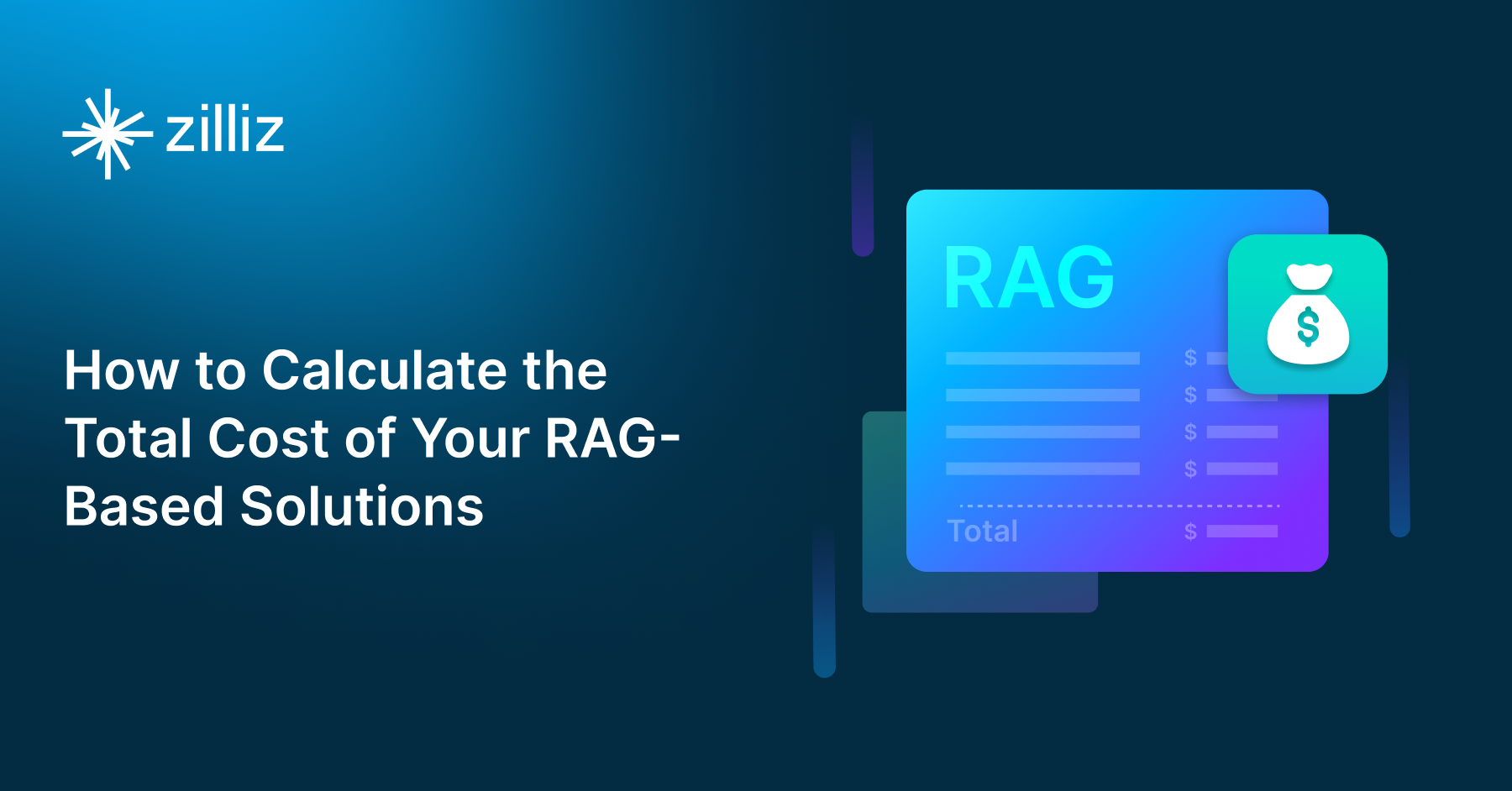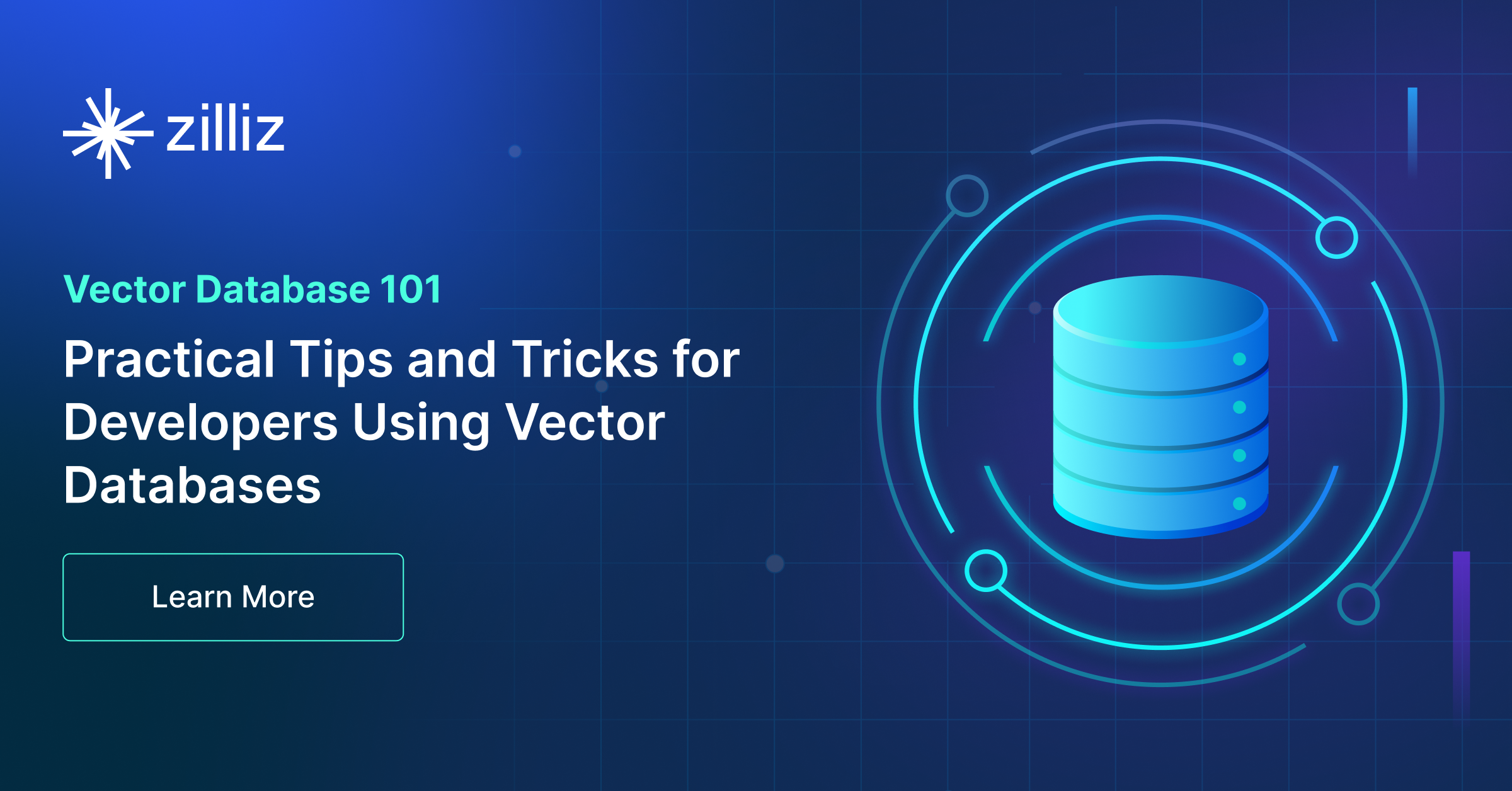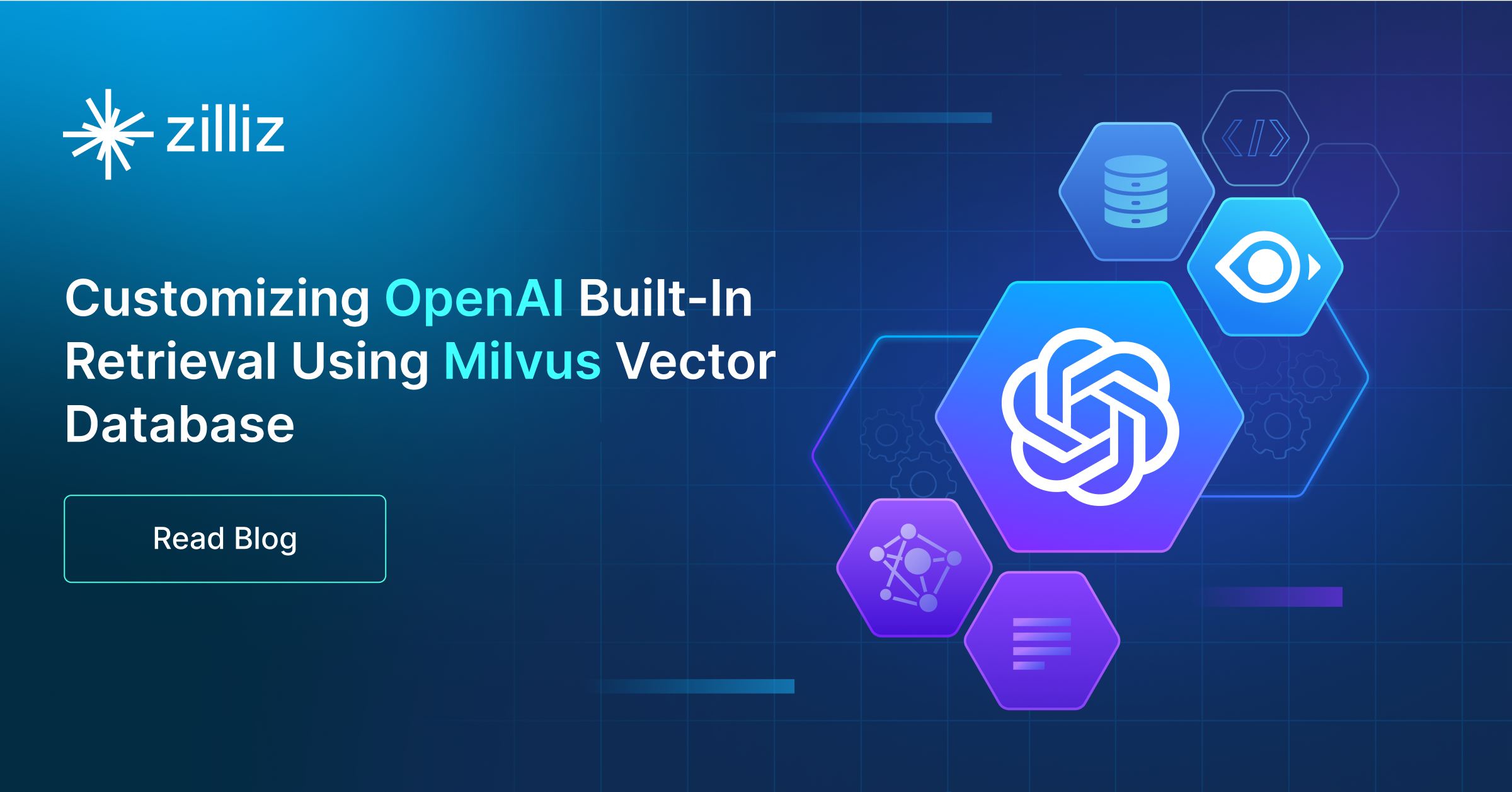Build RAG Chatbot with LangChain, OpenSearch, Together AI Mixtral 8x7B Instruct v0.1, and OpenAI text-embedding-ada-002
Introduction to RAG
Retrieval-Augmented Generation (RAG) is a game-changer for GenAI applications, especially in conversational AI. It combines the power of pre-trained large language models (LLMs) like OpenAI’s GPT with external knowledge sources stored in vector databases such as Milvus and Zilliz Cloud, allowing for more accurate, contextually relevant, and up-to-date response generation. A RAG pipeline usually consists of four basic components: a vector database, an embedding model, an LLM, and a framework.
Key Components We'll Use for This RAG Chatbot
This tutorial shows you how to build a simple RAG chatbot in Python using the following components:
- LangChain: An open-source framework that helps you orchestrate the interaction between LLMs, vector stores, embedding models, etc, making it easier to integrate a RAG pipeline.
- OpenSearch: An open-source search and analytics suite derived from Elasticsearch. It offers robust full-text search and real-time analytics, with vector search available as an add-on for similarity-based queries, extending its capabilities to handle high-dimensional data. Since it is just a vector search add-on rather than a purpose-built vector database, it lacks scalability and availability and many other advanced features required by enterprise-level applications. Therefore, if you prefer a much more scalable solution or hate to manage your own infrastructure, we recommend using Zilliz Cloud, which is a fully managed vector database service built on the open-source Milvus and offers a free tier supporting up to 1 million vectors.)
- Together AI Mixtral 8x7B Instruct v0.1: This model offers a powerful blend of instruction-based learning and advanced natural language understanding. With its 8x7B architecture, it excels in generating coherent and context-aware responses. Ideal for applications like chatbots, content creation, and educational tools where user guidance and high-quality interaction are essential.
- OpenAI text-embedding-ada-002: This model specializes in generating high-quality text embeddings, providing a powerful tool for various NLP applications. Its strengths lie in semantic search, clustering, and recommendation tasks. Ideal for developers needing efficient and scalable solutions for understanding and processing natural language data in diverse contexts.
By the end of this tutorial, you’ll have a functional chatbot capable of answering questions based on a custom knowledge base.
Note: Since we may use proprietary models in our tutorials, make sure you have the required API key beforehand.
Step 1: Install and Set Up LangChain
%pip install --quiet --upgrade langchain-text-splitters langchain-community langgraph
Step 2: Install and Set Up Together AI Mixtral 8x7B Instruct v0.1
pip install -qU "langchain[together]"
import getpass
import os
if not os.environ.get("TOGETHER_API_KEY"):
os.environ["TOGETHER_API_KEY"] = getpass.getpass("Enter API key for Together AI: ")
from langchain.chat_models import init_chat_model
llm = init_chat_model("mistralai/Mixtral-8x7B-Instruct-v0.1", model_provider="together")
Step 3: Install and Set Up OpenAI text-embedding-ada-002
pip install -qU langchain-openai
import getpass
import os
if not os.environ.get("OPENAI_API_KEY"):
os.environ["OPENAI_API_KEY"] = getpass.getpass("Enter API key for OpenAI: ")
from langchain_openai import OpenAIEmbeddings
embeddings = OpenAIEmbeddings(model="text-embedding-ada-002")
Step 4: Install and Set Up OpenSearch
pip install --upgrade --quiet opensearch-py langchain-community
from langchain_community.vectorstores import OpenSearchVectorSearch
opensearch_vector_search = OpenSearchVectorSearch(
"http://localhost:9200",
"embeddings",
embedding_function
)
Step 5: Build a RAG Chatbot
Now that you’ve set up all components, let’s start to build a simple chatbot. We’ll use the Milvus introduction doc as a private knowledge base. You can replace it with your own dataset to customize your RAG chatbot.
import bs4
from langchain import hub
from langchain_community.document_loaders import WebBaseLoader
from langchain_core.documents import Document
from langchain_text_splitters import RecursiveCharacterTextSplitter
from langgraph.graph import START, StateGraph
from typing_extensions import List, TypedDict
# Load and chunk contents of the blog
loader = WebBaseLoader(
web_paths=("https://milvus.io/docs/overview.md",),
bs_kwargs=dict(
parse_only=bs4.SoupStrainer(
class_=("doc-style doc-post-content")
)
),
)
docs = loader.load()
text_splitter = RecursiveCharacterTextSplitter(chunk_size=1000, chunk_overlap=200)
all_splits = text_splitter.split_documents(docs)
# Index chunks
_ = vector_store.add_documents(documents=all_splits)
# Define prompt for question-answering
prompt = hub.pull("rlm/rag-prompt")
# Define state for application
class State(TypedDict):
question: str
context: List[Document]
answer: str
# Define application steps
def retrieve(state: State):
retrieved_docs = vector_store.similarity_search(state["question"])
return {"context": retrieved_docs}
def generate(state: State):
docs_content = "\n\n".join(doc.page_content for doc in state["context"])
messages = prompt.invoke({"question": state["question"], "context": docs_content})
response = llm.invoke(messages)
return {"answer": response.content}
# Compile application and test
graph_builder = StateGraph(State).add_sequence([retrieve, generate])
graph_builder.add_edge(START, "retrieve")
graph = graph_builder.compile()
Test the Chatbot
Yeah! You've built your own chatbot. Let's ask the chatbot a question.
response = graph.invoke({"question": "What data types does Milvus support?"})
print(response["answer"])
Example Output
Milvus supports various data types including sparse vectors, binary vectors, JSON, and arrays. Additionally, it handles common numerical and character types, making it versatile for different data modeling needs. This allows users to manage unstructured or multi-modal data efficiently.
Optimization Tips
As you build your RAG system, optimization is key to ensuring peak performance and efficiency. While setting up the components is an essential first step, fine-tuning each one will help you create a solution that works even better and scales seamlessly. In this section, we’ll share some practical tips for optimizing all these components, giving you the edge to build smarter, faster, and more responsive RAG applications.
LangChain optimization tips
To optimize LangChain, focus on minimizing redundant operations in your workflow by structuring your chains and agents efficiently. Use caching to avoid repeated computations, speeding up your system, and experiment with modular design to ensure that components like models or databases can be easily swapped out. This will provide both flexibility and efficiency, allowing you to quickly scale your system without unnecessary delays or complications.
OpenSearch optimization tips
To optimize OpenSearch in a Retrieval-Augmented Generation (RAG) setup, fine-tune indexing by enabling efficient mappings and reducing unnecessary stored fields. Use HNSW for vector search to speed up similarity queries while balancing recall and latency with appropriate ef_search and ef_construction values. Leverage shard and replica settings to distribute load effectively, and enable caching for frequent queries. Optimize text-based retrieval with BM25 tuning and custom analyzers for better relevance. Regularly monitor cluster health, index size, and query performance using OpenSearch Dashboards and adjust configurations accordingly.
Together AI Mixtral 8x7B Instruct v0.1 optimization tips
Together AI’s Mixtral 8x7B Instruct v0.1 uses a mixture-of-experts (MoE) architecture to balance efficiency and performance. Optimize retrieval by dynamically adjusting the number of retrieved documents based on query complexity to prevent overloading the context window. Structure prompts effectively, ensuring that critical details are at the start of the input to guide the model’s focus. Use a temperature of 0.1–0.3 for factual accuracy while tweaking top-k and top-p for balanced response generation. Together AI’s inference stack allows for optimized execution, so enable expert pruning to limit active pathways when full capacity isn’t needed. Implement caching strategies for common queries to minimize redundant processing. If integrating multiple models, use Mixtral 8x7B for medium-to-high complexity reasoning while offloading simpler queries to smaller, more efficient models.
OpenAI text-embedding-ada-002 optimization tips
OpenAI text-embedding-ada-002 is widely used for its balance between performance and cost efficiency. Optimize retrieval by segmenting long documents into smaller, meaningful chunks before embedding, ensuring better contextual alignment with queries. Implement vector quantization to reduce memory footprint if handling large-scale embeddings. Use multi-stage retrieval, where an initial ANN search is followed by a more precise filtering or re-ranking step. Adjust index refresh frequency based on data update cycles to maintain relevance without excessive compute overhead. Leverage batching for embedding operations to minimize API latency. Consider fallback mechanisms, such as keyword-based retrieval, for edge cases where dense search alone may fail.
By implementing these tips across your components, you'll be able to enhance the performance and functionality of your RAG system, ensuring it’s optimized for both speed and accuracy. Keep testing, iterating, and refining your setup to stay ahead in the ever-evolving world of AI development.
RAG Cost Calculator: A Free Tool to Calculate Your Cost in Seconds
Estimating the cost of a Retrieval-Augmented Generation (RAG) pipeline involves analyzing expenses across vector storage, compute resources, and API usage. Key cost drivers include vector database queries, embedding generation, and LLM inference.
RAG Cost Calculator is a free tool that quickly estimates the cost of building a RAG pipeline, including chunking, embedding, vector storage/search, and LLM generation. It also helps you identify cost-saving opportunities and achieve up to 10x cost reduction on vector databases with the serverless option.
 Calculate your RAG cost
Calculate your RAG cost
What Have You Learned?
By diving into this tutorial, you’ve unlocked the power of combining cutting-edge tools to build a robust RAG system from scratch! You learned how LangChain acts as the glue, seamlessly orchestrating workflows between components like OpenSearch (your scalable vector database) and Together AI’s Mixtral 8x7B (a powerhouse LLM that balances speed and quality). With OpenAI’s text-embedding-ada-002, you saw how to transform raw text into meaningful vectors, enabling OpenSearch to efficiently retrieve the most relevant chunks of information. This pipeline isn’t just functional—it’s smart, allowing your applications to pull context-aware answers from vast datasets while minimizing hallucinations. Plus, you discovered pro tips for optimizing performance, like tweaking chunk sizes and experimenting with hybrid search strategies, ensuring your system runs smoothly even under heavy loads. And let’s not forget the free RAG cost calculator—a game-changer for budgeting your projects without surprises!
Now that you’ve seen how these pieces fit together, the real magic begins. Imagine the applications you could build: chatbots that truly understand niche domains, research tools that surface insights in seconds, or creative assistants that blend accuracy with flair. You’ve got the blueprint—it’s time to tinker, iterate, and make it your own. Don’t just stop at “working”; optimize, experiment, and push boundaries. The future of intelligent apps is in your hands, and with tools this powerful, there’s no limit to what you’ll create. Go break things (in the best way), and let your RAG system shine! 🚀
Further Resources
🌟 In addition to this RAG tutorial, unleash your full potential with these incredible resources to level up your RAG skills.
- How to Build a Multimodal RAG | Documentation
- How to Enhance the Performance of Your RAG Pipeline
- Graph RAG with Milvus | Documentation
- How to Evaluate RAG Applications - Zilliz Learn
- Generative AI Resource Hub | Zilliz
We'd Love to Hear What You Think!
We’d love to hear your thoughts! 🌟 Leave your questions or comments below or join our vibrant Milvus Discord community to share your experiences, ask questions, or connect with thousands of AI enthusiasts. Your journey matters to us!
If you like this tutorial, show your support by giving our Milvus GitHub repo a star ⭐—it means the world to us and inspires us to keep creating! 💖
- Introduction to RAG
- Key Components We'll Use for This RAG Chatbot
- Step 1: Install and Set Up LangChain
- Step 2: Install and Set Up Together AI Mixtral 8x7B Instruct v0.1
- Step 3: Install and Set Up OpenAI text-embedding-ada-002
- Step 4: Install and Set Up OpenSearch
- Step 5: Build a RAG Chatbot
- Optimization Tips
- RAG Cost Calculator: A Free Tool to Calculate Your Cost in Seconds
- What Have You Learned?
- Further Resources
- We'd Love to Hear What You Think!
Content
Vector Database at Scale
Zilliz Cloud is a fully-managed vector database built for scale, perfect for your RAG apps.
Try Zilliz Cloud for Free


